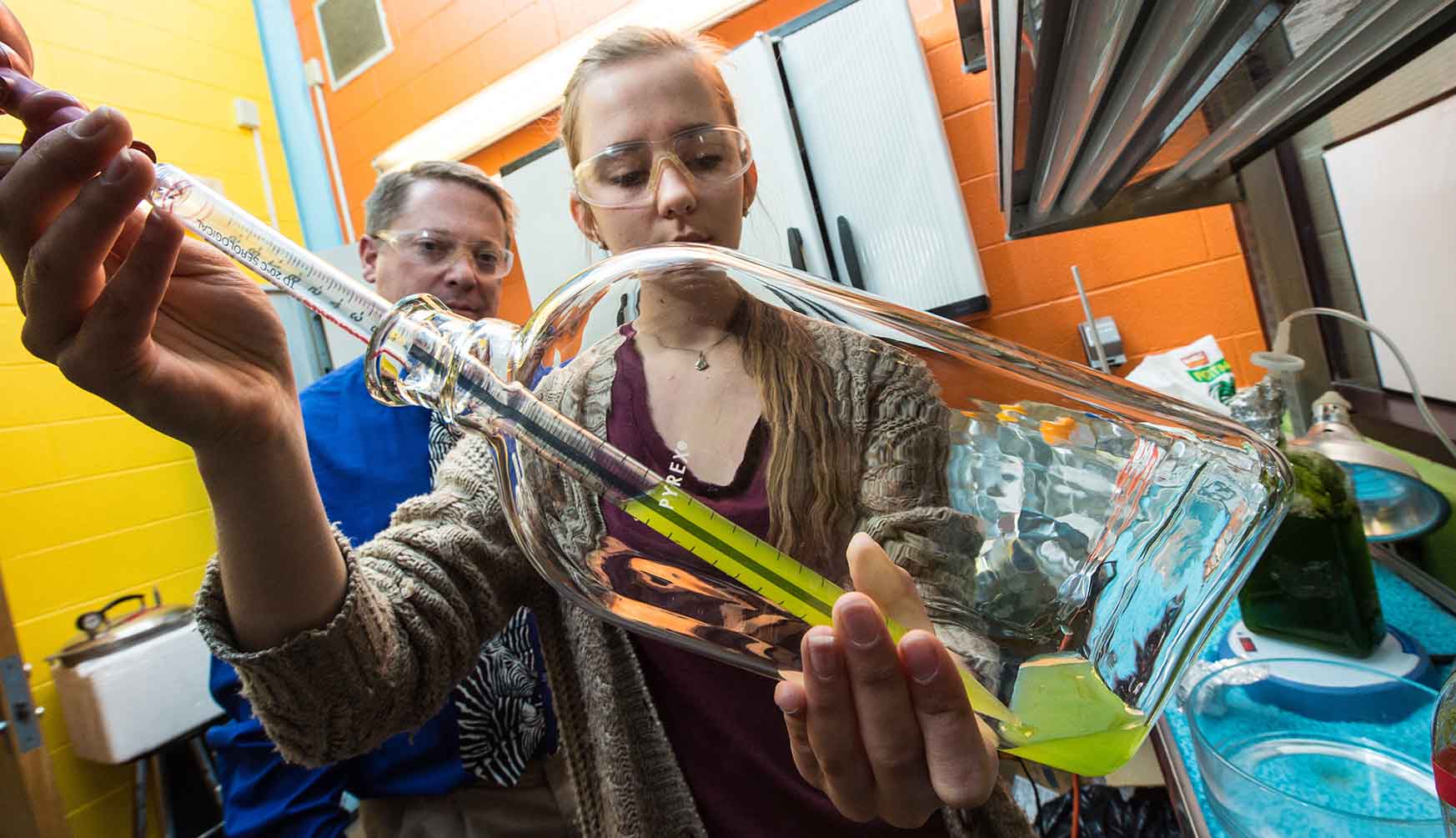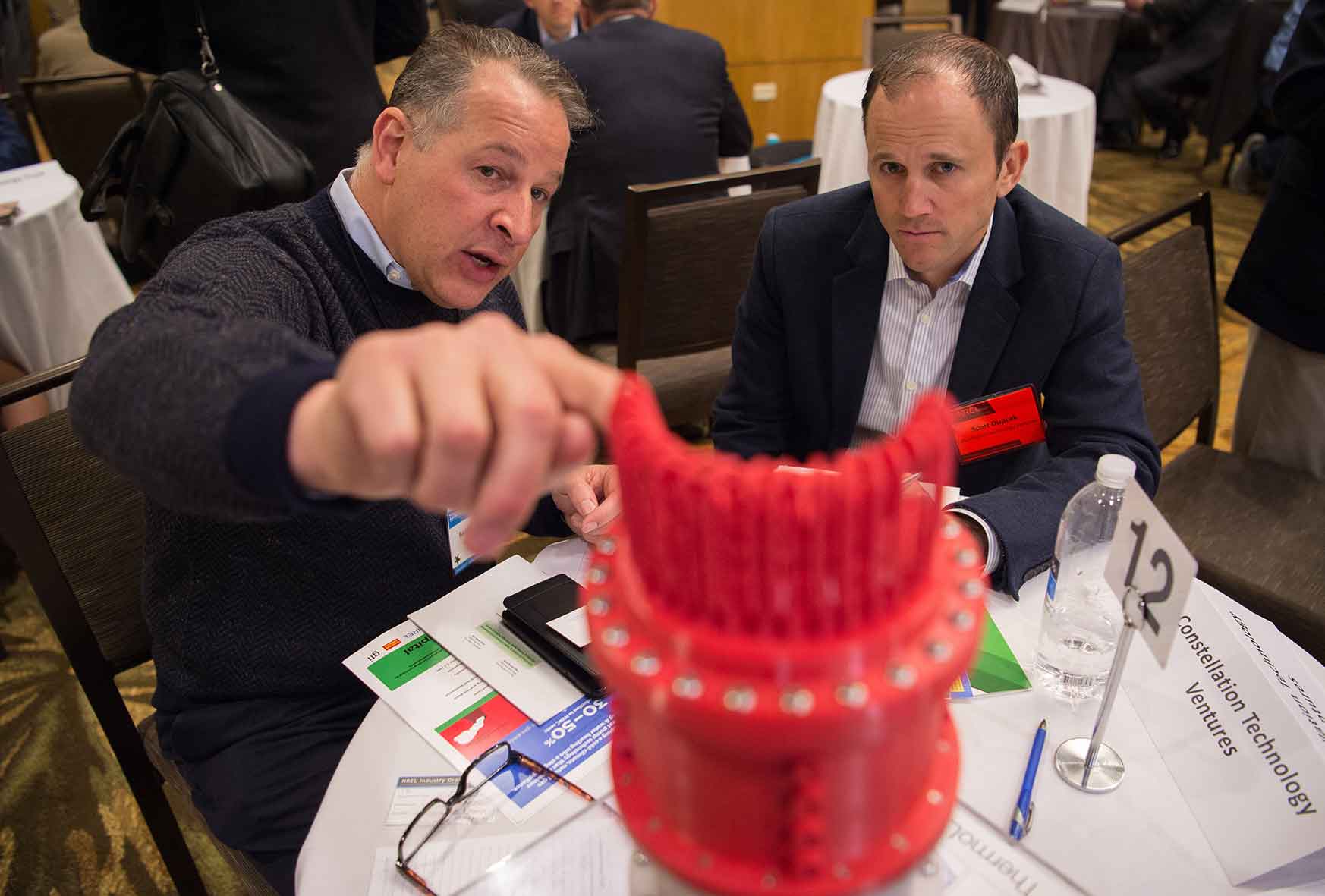June 2017
News Release: NREL-Led Research Effort Creates New Alloys, Phase Diagram
A multi-institutional team led by the U.S. Department of Energy's National Renewable Energy Laboratory (NREL) discovered a way to create new alloys that could form the basis of next-generation semiconductors.
NREL Co-Leading New Consortium to Overcome Catalysis Challenges for Biomass Applications
The National Renewable Energy Laboratory is co-leading the Chemical Catalysis for Bioenergy Consortium (ChemCatBio), a new research and development consortium dedicated to identifying and overcoming catalysis challenges for biomass conversion processes.
NREL Brings Midmarket Solar PV Technical Assistance to 36 Universities and Colleges
NREL has offered no-cost technical assistance to American universities seeking to go solar. The program, in support of the U.S. Department of Energy's SunShot initiative, is designed to increase the deployment of mid-scale solar photovoltaic (PV) systems at universities, engage stakeholders to develop deployment solutions, and empower decision makers.
NREL's III-V Team Demonstrates Record Efficiency Dual-Junction Solar Cell
NREL scientists recently demonstrated a dual-junction solar cell with a record one-sun, certified efficiency of 32.6% (±1.4%), surpassing the previous record by a full percentage.
May 2017
News Release: NREL Names Juan Torres to Lead Energy Systems Integration
Juan Torres takes over June 5 as the new Associate Laboratory Director for Energy Systems Integration at the U.S. Department of Energy's (DOE) National Renewable Energy Laboratory (NREL).
Popular NREL-Developed Transportation Mobile App Launches on Android Platform
A new Android version of the Alternative Fueling Station Locator App was recently released. The NREL-developed mobile application for the U.S. Department of Energy’s Clean Cities program joins the original iPhone version, and allows users to select an alternative fuel—including electricity, natural gas, biodiesel, ethanol (E85), propane, and hydrogen—to find the 20 closest stations within a 30-mile radius.
News Release: Teams From Stargate, Manning Options Schools Victorious in NREL's 27th Solar and Lithium-Ion Car Races
Fifty-three teams from 18 Colorado middle schools gathered at the Energy Department’s National Renewable Energy Laboratory (NREL) in Golden today for the 27th Annual Junior Solar Sprint and Lithium-Ion Battery Car Competitions.
Wind Energy's Next Generation Competes in the Collegiate Wind Competition
Last month, 10 college teams from around the country convened at the National Wind Technology Center (NWTC) at the National Renewable Energy Laboratory to participate in the U.S. Department of Energy Collegiate Wind Competition 2017 Technical Challenge. The participating teams included:
NREL Research Takes Off for International Space Station
Students at Chatfield High School are hoping their algal research yields energy in microgravity.
News Release: NREL's Quantum Dot Research Yields Greater Control
Researchers at the U.S. Department of Energy's National Renewable Energy Laboratory (NREL) have developed new designer quantum dot systems with greater control over beneficial properties for photoelectrochemical and photovoltaic solar applications.
NREL and iUnit Open the Door to Grid-Integrated, Multifamily Construction
On May 4, 2017, nearly 30 industry partners visited NREL's Energy Systems Integration Facility to see a modular studio prototype apartment created by Denver developer, iUnit.
NREL Biorefinery Air Pollutant Emissions Analysis Explores Mitigation Options
A new study by NREL's Biofuel Air Emissions Analysis team describes the team's modeling of non-greenhouse gas air pollutant emissions for two feasibility-level biorefinery designs: (1) a biochemical technology pathway focused on biological conversion of cellulosic sugars and (2) a thermochemical pathway focused on fast pyrolysis of whole biomass.
NREL Partners with California Valley Transportation Authority on Electric Bus Grid Integration Project
NREL is partnering with the Santa Clara Valley Transportation Authority (VTA) in California on a new Advanced Transit Bus Vehicle Grid Integration (VGI) Project to develop and demonstrate VGI strategies and analytics to inform state-wide opportunities for transit agencies. The California Energy Commission is funding the $2 million project, which will span four years and includes a variety of partners.
Industry Growth Forum Goes Swimmingly for Cleantech Innovators
NREL's Industry Growth Forum convenes venture capitalists, government representatives, and cleantech experts.
News Release: New Method of Microbial Energy Production Discovered
For all living things to succeed, they must reproduce and have the energy to do so. An organism's ability to extract energy from its surroundings--and to do it better than its competitors--is a key requirement of survival. Until recently it was thought that in all of biology, from microbes to humans, there were only two methods to generate and conserve the energy required for cellular metabolism and survival.
News Release: NREL's Advanced Atomic Layer Deposition Enables Lithium-Ion Battery Technology
The U.S. Department of Energy's National Renewable Energy Laboratory (NREL) has entered into an exclusive license agreement with Forge Nano to commercialize NREL's patented battery materials and systems capable of operating safely in high-stress environments. A particular feature of the technology is the encapsulation of materials with solid electrolyte coatings that can be designed to meet the increasingly demanding needs of any battery application.
Webinar May 11: Manufacturing Competitiveness and Supply Chain Analyses for Hydrogen Refueling Stations
The U.S. Department of Energy's Fuel Cell Technologies Office will present a live webinar titled "Manufacturing Competitiveness and Supply Chain Analyses for Hydrogen Refueling Stations" on Thursday, May 11, from 10 to 11 a.m. Mountain Daylight Time.
News Release: NREL Scientists and Engineers Recognized for Top Innovations
The U.S. Department of Energy's (DOE) National Renewable Energy Laboratory (NREL) recognized its innovation and partnering successes and honored the scientists and engineers behind them at the lab's annual Innovation and Technology Transfer Awards ceremony.
News Release: NREL to Work with 14 Additional Small Businesses as Part of the DOE Small Business Vouchers Program
The U.S. Department of Energy's (DOE) National Renewable Energy Laboratory (NREL) will collaborate with 14 companies to address their critical technology challenges under the third round of DOE's Small Business Vouchers (SBV) program.
April 2017
NREL, NASA, and UCL Team Up to Make Lithium-Ion Batteries Safer on Earth and in Space
NREL has teamed up with the National Aeronautics and Space Administration and University College London for a study on lithium-ion battery failure using the lab's newly patented Battery Internal Short Circuit Device. A clear, in-depth understanding of what causes destructive, internal short circuits will set the stage for improved manufacturing processes to make these popular batteries safer in all applications.
Last Updated May 28, 2025


